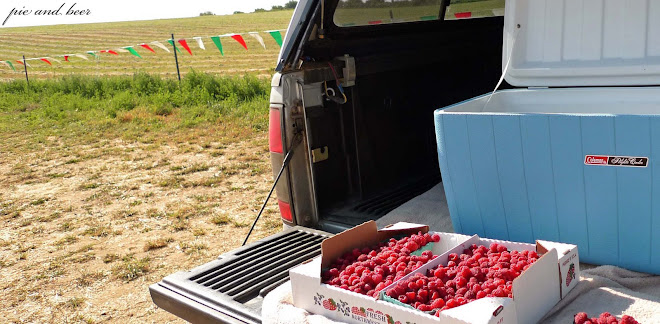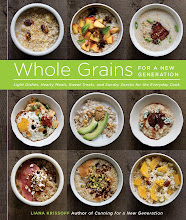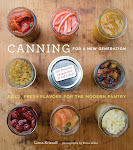Catfish with Riesling and Grapes
Serves 2 (and a half)
About 3 ounces bacon, diced
2 leeks, bottom 2 inches only, roots trimmed off
Vegetable oil
1/2 cup late-harvest (sweet) Riesling
1/2 cup white wine such as Chardonnay
2 cups red grapes
Salt and freshly ground black pepper
1 Russet potato
2 tablespoons unsalted butter
1/4 cup warmed milk
1 tablespoon grapeseed oil
Handful of baby arugula
2 (and a half) 6-ounce pieces catfish or other fish fillet
In a heavy skillet, fry the bacon until crisp. Remove to paper towels to drain.
Cut the leeks in half lengthwise and cut into thin julienne strips. Wash well under cold water, then drain and pat dry with paper towels. Roughly chop 1/2 cup of the leeks and set aside. Heat about 1 inch oil in a heavy-bottomed 1 1/2-quart saucepan until it's shimmering but not smoking. Add a small handful of the remaining julienned leeks and fry until well browned, 45 seconds to 1 minute. Remove to paper towels to drain. Repeat with the remaining julienned leeks.
Pour off all but 1 tablespoon of the oil (strain and reserve it for another use, if you like) and add the reserved chopped leeks. Sauté over medium-high heat until browned, about 3 minutes. Add the wines and 1 1/2 cups of the grapes and raise the heat to high. Bring to a boil, then lower the heat and simmer for 8 to 10 minutes, until the grapes are very soft and have burst open.Transfer the mixture to a blender and puree. Pour through a fine-mesh sieve set over the saucepan and discard the solids in the sieve. Simmer the sauce over medium-low heat for 15 to 20 minutes, until reduced to 2/3 cup, skimming the foam from the surface occasionally. Set aside.
Peel, chop, and boil the potato until very tender. Pass through a potato ricer twice, then put in a medium bowl and beat in 1 tablespoon of the butter and the milk; whip until very smooth. Cover to keep warm.
Cut the remaining 1/2 cup grapes in half. Toss the grapes with the arugula, fried leeks, bacon, and a drizzle of the sauce and season the salad with salt and pepper to taste.
Rewarm the sauce and whisk in the remaining 1 tablespoon butter until smooth. Spoon some of the sauce onto each of 2 (and a half) plates and dollop some of the whipped potatoes on the side.
In a heavy skillet, heat the grapeseed oil over high heat until shimmering but not smoking. Season the fish with salt and pepper and carefully place it in the pan (skin side down, if it has skin). Cook, without turning, until well browned and crisp on the bottom, about 4 minutes, then use a thin metal spatula to turn the fish over gently. Cook until just opaque in the center. Place the fish over the sauce on the plates and top with the salad. Serve immediately.
 For dessert I had a couple squares of a very good Dagoba dark milk chocolate.
For dessert I had a couple squares of a very good Dagoba dark milk chocolate.And after: Well, I've decided to make some changes in the way I eat. I want to try to avoid high-refined-carbohydrate foods like white flour and sugars (except on special occasions, of course, like when there are good peaches available and we haven't had pie for a while), and I want to eat more nonstarchy vegetables and whole grains. As you might have noticed from the last few posts, I've been making more than my share of bread and cakey things lately, so it's time to shift gears. Also, it's how Mr. Chalmers prefers to eat anyway, and I think my new approach has had the added benefit of making meals and cooking in general more fun for both of us. I'm not going overboard with this, obviously, and I'm not following any specific "plan" (although I admit I actually purchased the embarassingly named South Beach Diet good carbs, good fats guide as a reference); I still drink coffee in the morning, tea in the afternoon, and wine with supper, and I don't feel terrible if we go out for breakfast on Sunday morning and I have, for example, fresh orange juice and multigrain pancakes (yay!).
Mr. Chalmers roasted a leg of lamb in the smoker! He rubbed it with an interesting spice blend that included lots of cinnamon and nutmeg, and he stuck cloves of garlic into cuts in the meat. Not exactly low-fat, but it fit in with what I'm trying to do right now, and was absolutely delicious in small portions, with dollops of hummus and a simple cucumber-yogurt sauce on the side.
 The bug is playing with the heart-shaped pancake/egg mold her grandma and grandpa sent to her for Valentine's Day. And she has a dangerously large piece of apple in her mouth . . .
The bug is playing with the heart-shaped pancake/egg mold her grandma and grandpa sent to her for Valentine's Day. And she has a dangerously large piece of apple in her mouth . . . And speaking of her, here she is in the cute-as-a-button smocked dress my mom made for her. She wears it with jeans and sneakers. It buttons all the way down the back.
And speaking of her, here she is in the cute-as-a-button smocked dress my mom made for her. She wears it with jeans and sneakers. It buttons all the way down the back.I've been trying to make most of our suppers as special and as varied as possible so I don't miss the carbs so much these first couple weeks. Following the advice of someone posting on Chowhound, I tried cooking egg-dipped and parmesan-sprinkled eggplant in the waffle maker, for example, which was not disastrous but not worth doing again; for supper I ended up cooking the eggplant in a cast-iron skillet and topping it with a long-simmered marinara—it was good! I've also made two varieties of almost-no-carb "crackers" that Mr. Chalmers seems to like a lot. Will post recipes for those at some point. I tried making flax seed meal "pancakes" the other morning and was pretty depressed for the next several hours, so I don't think I'll be doing any more such fake foods—these suckers looked just like pancakes and smelled just like pancakes, but last time I checked pancakes weren't supposed to be slimy.
Saturday I was under the weather and needed something comforting and soothing, so for late lunch/early dinner I made a variation of Linda Dannenberg's salmon with dill gribiche from her wonderful Fresh Herb Cooking. (Her name is misspelled on Amazon.) I'd highly recommend this book, by the way. I don't even own it, but I keep calling my mom to ask her to dictate recipes I remember from when I tested them years ago; some all-time classics I've made many times: eggplant tian, the salmon dish, and there's an amazing thyme-scented chocolate cake I've been wanting to make again . . .
The salmon I made the other day had no potatoes and no spinach. I added asparagus with all the other vegetables, and I used Vidalia spring onions instead of leeks (which were a shocking $3.99 for a bunch of three at the Kroger!). I used only about 2 tablespoons butter in the broth (most of which is left behind in the skillet). For the gribiche, I omitted the parsley and cut the quantity of oil by more than half (this makes a less-thick sauce, but it doesn't need to be that thick here), and I used only half of a hard-boiled egg. The sauce recipe makes much more than you need, but it's great on sandwiches (if you're eating sandwiches) and just spooned over plain steamed or pan-seared fish. It keeps for about a week in the fridge. I'm giving the original recipe here, because it's so good, but know that it takes to adaptations very well.

Salmon with Dill Gribiche SauceOne of my favorite simple meals so far has been that old standby of low-carb early adopters (that is, pre-Dreamfields): zucchini "linguine." I know, I know, it's not like pasta at all, but it is a tasty and satisfying vehicle for one of my favorite pasta sauces, Patricia Wells's meat and celery sauce. I made a big batch of the sauce, and when lunchtime rolls around all I have to do is slice a zucchini on the mandoline (I have an Oxo one that works quite well for this purpose), throw it in a sauté pan, spoon on some of the sauce straight from the fridge, sprinkle with a little water and salt and pepper, and cook until everything is heated through and the zucchini is just tender. It all takes about seven minutes. The bug loves it (and sometimes I cook some regular macaroni for her too).
From chef Charlene Rollins, in Talent, Oregon.
Serves 4
8 small purple potatoes, cut in half lengthwise
1 sweet red pepper, roasted and peeled, seeds removed
2 medium leeks, white and light green parts only
1 red onion
8 shiitake mushrooms, stems removed
2 tablespoons chopped dill
5 tablespoons butter
Salt
Four 6-ounce salmon fillets
Freshly ground black pepper
2 tablespoons olive oil
2 bunches spinach, stems removed, washed
½ cup Dill Gribiche Sauce
Dill sprigsCook the potatoes in boiling water until just tender, 8 to 10 minutes. Drain and set aside. Cut the roasted pepper into 1-inch squares. Cut the leeks crosswise into 1/4-inch rounds and wash thoroughly. Dice the onion. Wipe the mushrooms with a paper towel to remove any dirt, and cut the caps into quarters.
In a large sauté pan or saucepan, put the potatoes, roasted pepper, leeks onion, mushrooms, chopped dill, butter, and 1 teaspoon salt. Pour in enough water to just cover the vegetables and bring to a boil. Lower the heat to maintain a simmer; cook for 5 to 8 minutes, until the leeks and onion are soft.
Meanwhile, lightly season the salmon with salt and pepper on both sides. When the vegetables are almost done, heat the olive oil in a skillet over medium-high heat, and place the salmon in the skillet. Cook for 2 minutes, turn, and cook for 1 or 2 minutes longer, or to desired degree of doneness.
Add the spinach to the pan with the broth, and gently stir it in; cook for about 2 minutes, until the spinach is wilted and bright green.
Using a slotted spoon, transfer the vegetables from the broth to 4 individual serving plates; return the broth to the heat. Place the salmon over the vegetables. Pout a little of the broth over each portion. Spoon a line of gribiche sauce across the salmon and onto some of the vegetables. Season with salt and pepper, garnish with the dill sprigs, and serve immediately.
Dill Gribiche Sauce
Makes 2 cups
1 unshelled egg
1 tablespoon sherry vinegar
1 tablespoon pickle juice
1/4 teaspoon salt
1 packed cup parsley leaves
1 cup dill, with stems, coarsely chopped
1/3 cup capers
2 cups canola oil
4 shallots
3 medium-sized crunchy dill pickles
2 hard-boiled eggs, cooled and peeledBring a small pot of water to a boil. Gently place the egg in the boiling water, cover, and remove from the heat. Let stand for 6 minutes, then remove the egg and crack it into the bowl of a food processor. Add the vinegar, pickle juice, and salt; process until smooth. Add the parsley and dill and proces. Add the capers; then, with the processor running, gradually add the oil in a thin stream, until the mixture is thick but still pourable. If it’s too thick, stir in a dash of pickle juice. Transfer the sauce to a sealable plastic container.
Finely mince the shallots, and dice the pickles and hard-boiled eggs; stir them into the sauce and season to taste with pickle juice or vinegar. The gribiche will keep for a week or two in the refrigerator.




















